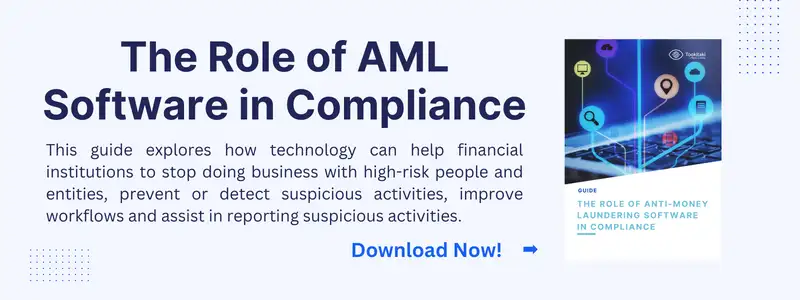The Monetary Authority of Singapore (MAS) has a longstanding commitment to ensuring the financial integrity of Singapore's thriving financial center. In its continuous efforts to mitigate risks associated with money laundering and terrorism financing (AML/TF), MAS regularly issues directives and guidance to financial institutions operating within the country.
One such important directive, recently issued by the MAS, is specifically aimed at the wealth management sector - an area that has an inherently higher exposure to AML/TF risks due to factors such as client attributes, the size and complexity of transactions, and the very nature of the services provided.
This directive, codified as Circular No.: AMLD 02/2023 and released in March 2023, underscores the crucial role of financial institutions as gatekeepers in ensuring that wealth management fund flows into Singapore are legitimate. It also sets out the expectation for these institutions to remain vigilant to the evolving ML/TF risks, particularly in the context of high growth areas.
This blog post aims to delve deeper into the implications of this directive, the potential challenges that financial institutions may face, and how they can strike a successful balance between growth and compliance. Furthermore, it explores the role of technology in mitigating AML risks and how advanced Regtech solutions, such as those offered by Tookitaki, can assist in navigating this complex landscape.
The Dual Challenge of Growth and Compliance
Inherent ML/TF Risks in Wealth Management
The wealth management sector is characterised by high-value transactions, complex financial structures, and clientele that often includes high-net-worth individuals. All of these factors create an inherently higher exposure to money laundering and terrorism financing (ML/TF) risks. The sheer scale and intricacy of transactions can be exploited for illegal purposes.
Additionally, high-net-worth individuals might use complex structures or offshore entities for wealth management, which could obscure the true source of funds or beneficial ownership, thereby elevating the risk of illicit activities.
Balancing Growth and Regulatory Compliance: A Tough Act
While striving for growth, financial institutions face the daunting task of staying in line with the evolving regulatory landscape. Rapid expansion in services and clientele, especially in high growth areas, can potentially exacerbate the ML/TF risks if existing controls are not concurrently scaled and adapted. The MAS directive makes it clear that financial institutions should remain alert and actively enhance their risk controls in line with their growth trajectory.
However, this is easier said than done. As they broaden their wealth management offerings, institutions are challenged to monitor and mitigate a larger number of complex transactions without impeding the speed and efficiency of service. Further, they must remain vigilant towards higher-risk customers and transactions and constantly update and educate their Board and Senior Management about these risks.
Building a strong, robust compliance program that can handle high volume and complexity without compromising on growth ambitions is a challenge. Yet, failing to strike the right balance could lead to severe reputational damage, financial penalties, and potentially jeopardize the financial institution's license to operate.
Understanding the MAS Directive
The Monetary Authority of Singapore (MAS) has made it clear in its recent directive (AMLD 02/2023) that financial institutions need to fortify their risk controls in parallel with the growth of their wealth management business. Let's delve into the directive's key points:
Strengthening Board and Senior Management (BSM) Oversight
At the helm of every financial institution, the Board and Senior Management (BSM) play a crucial role in setting the institution's tone and direction when it comes to risk management and compliance. The MAS directive emphasises the need to bolster BSM oversight, particularly for high-growth areas.
- The BSM should stay informed about potential ML/TF risks stemming from these areas and create a clear action plan to deal with them. It is essential for the BSM to send a strong message on the importance of risk management and maintaining a strong internal control environment.
- Quality assurance reviews and testing should be carried out regularly to validate the effectiveness of the institution's Anti-Money Laundering/Countering the Financing of Terrorism (AML/CFT) controls. The BSM should stay updated with the results of these tests.
- The risk and control functions within the institution need to be adequately resourced and should have a firm grasp on changes in business strategies or customer segments. These teams are responsible for monitoring the ML/TF risk profiles of identified high-growth areas.
Enhancing Risk and Control Functions
The directive further stresses the need to enhance risk and control functions to remain abreast with the evolving risk landscape.
- An added review and quality assurance testing of existing Customer Due Diligence (CDD) practices in high-growth areas is encouraged to ensure that the frontline and control functions are operating effectively.
- If the CDD controls are found to be lacking in dealing with the risk characteristics of high-growth areas, FIs are urged to enhance their CDD practices promptly. This includes identifying higher-risk customers and corroborating the source of wealth (SOW) and source of funds (SOF) of customers.
- FIs are expected to stay vigilant towards higher-risk customers and transactions. This includes being aware of the additional ML/TF risks when dealing with complex legal structures used for wealth management. Due diligence is needed to understand the purpose of such structures and to identify and verify the ultimate beneficial owners (UBO).
The Need for Vigilance
The directive calls for financial institutions to maintain a high level of vigilance, especially when dealing with higher-risk customers and transactions. Institutions should be alert to unusual patterns of transactions, such as unexpected fund flows or spikes in transactions, especially those involving higher-risk jurisdictions. The MAS strongly encourages the use of data analytics to identify unusual transaction patterns and customer networks of concern.
In the subsequent section, we will discuss how technology and regtech solutions such as those offered by Tookitaki can aid financial institutions in implementing and adhering to the guidelines set out in the MAS directive.
Impact of the Directive on Financial Institutions
The directive issued by MAS brings to light certain shifts that financial institutions must make to their operations and practices. The impacts on the industry, particularly in high-growth areas and customer due diligence, are substantial.
Operations in High Growth Areas
- Enhanced Oversight: The directive makes it clear that areas experiencing high growth should be under enhanced supervision. Financial institutions are expected to identify these areas and ensure that risk management protocols evolve in tandem with growth. This calls for a holistic review of current practices and possibly an investment in new resources to manage increased risk.
- Increased Resources: The need for well-resourced risk and control functions as emphasized by the directive might lead to increased personnel or technology investments in these areas. Institutions may need to hire new staff or provide additional training to existing personnel. Alternatively, they may choose to invest in advanced technologies that enable more efficient risk monitoring and management.
- Business Strategy Adjustments: The directive's focus on staying updated with changes in business strategy and target customer segments may require institutions to implement more rigorous review processes. This includes staying updated on business developments and being agile enough to respond to changes in risk profiles associated with strategic shifts.
Impact on Customer Due Diligence Practices
- Deeper Scrutiny of Customers: As part of the enhanced Customer Due Diligence (CDD) practices, financial institutions will need to delve deeper into identifying higher risk customers. This may require more thorough checks into a customer's background, transaction history, and relationship with the institution.
- Understanding Complex Structures: When dealing with wealth management structures such as trusts, family offices, and insurance wrappers, the institutions will need to undertake more comprehensive investigations. They will need to understand the purpose of these structures, assess the associated ML/TF risks, and identify the ultimate beneficial owners (UBO). This might require developing more comprehensive knowledge bases and may increase the time taken to onboard clients with such structures.
- Increased Transaction Monitoring: The directive necessitates vigilance over higher-risk transactions. This includes watching out for unexpected fund flows, transaction spikes, and transactions involving higher-risk jurisdictions. This will mean enhanced transaction monitoring protocols and possibly the use of advanced data analytics to identify suspicious transaction patterns.
The Role of Technology in Mitigating AML Risks
As financial institutions navigate through the heightened demands of the new MAS directive, technology presents itself as a vital ally. The use of advanced tools and systems can make the difference between reactive compliance and proactive risk management.
Aiding Compliance and Risk Management
- Automated Systems: Technology can automate much of the necessary compliance and risk management activities. From conducting robust customer due diligence to monitoring high-risk transactions, automated systems can significantly reduce manual workload while improving accuracy and efficiency.
- AI and Machine Learning: The use of artificial intelligence and machine learning algorithms can enhance the detection of suspicious patterns in transactions and identify hidden risk factors. By learning from historical data and evolving in real time, these tools can provide an edge in managing complex ML/TF risks.
- Integration and Scalability: Technological solutions allow for integration with existing systems and scalability to adapt to changes in business strategy, growth areas, and customer segments. This ensures that compliance efforts remain effective even as institutions evolve and grow.
How Tookitaki Can Help
Tookitaki's Regtech solutions are tailor-made to address the challenges of managing ML/TF risks while complying with regulatory directives. By employing machine learning and data analytics, Tookitaki provides the necessary tools to strengthen compliance and risk management practices.
Advanced Machine Learning Capabilities
Tookitaki’s Anti-Money Laundering Suite (AML Suite) utilises machine learning to develop an in-depth understanding of each institution's unique risk landscape. By learning from historical data and adjusting to new information in real time, the software can accurately identify potential ML/TF risks and alert relevant parties.
- Proactive Risk Management: Machine learning enables proactive risk management by identifying potential risks based on complex patterns that might be missed by manual checks. This helps in strengthening risk and control functions and ensuring that they keep pace with the growth of the wealth management business.
- Enhanced Monitoring: AML Suite continually monitors for unusual transaction patterns and unexpected fund flows, providing an extra layer of security for financial institutions. Machine learning enhances the detection of anomalous spikes and third-party flows, assisting institutions in fulfilling the MAS directive's requirements for vigilant monitoring.
Robust Customer Due Diligence
Tookitaki’s solutions facilitate rigorous customer due diligence, aiding in the identification of high-risk customers, including those posing tax evasion and corruption-related risks.
- Customer Screening: AML Suite's Smart Screening module detects potential matches against sanctions lists, PEPs, and other watchlists. It includes 50+ name-matching techniques and supports multiple attributes such as name, address, gender, date of birth, and date of incorporation.
- Customer Risk Scoring: Tookitaki's Customer Risk Scoring solution is a flexible and scalable customer risk ranking program that adapts to changing customer behaviour and compliance requirements. This module creates a dynamic, 360-degree risk profile of customers.
- Continuous Assessment: The software enables continuous assessment of customers and their activities, keeping an eye out for changes in risk profiles and providing actionable insights. This continuous monitoring is essential in the high-growth areas identified by the directive.
Through its advanced solutions, Tookitaki assists financial institutions in striking a balance between robust growth and regulatory compliance. As the MAS directive underscores the importance of vigilance in the wealth management sector, Tookitaki's Regtech solutions ensure that institutions are well-equipped to manage and mitigate potential risks.
Final Thoughts
The Monetary Authority of Singapore's directive for financial institutions to mitigate money laundering and terrorism financing (ML/TF) risks in the wealth management sector reflects the crucial balance between financial growth and regulatory compliance. Financial institutions are challenged to meet regulatory obligations while managing complex, high-value transactions typical of the wealth management industry.
Tookitaki's Regtech solutions, with advanced machine learning capabilities and robust customer due diligence features, provide the necessary support to financial institutions. They offer an effective means to manage ML/TF risks, strengthen compliance practices, and ensure that institutions can successfully balance the dual imperatives of growth and compliance.
Understanding the regulatory landscape and the sophisticated strategies required to navigate it can be complex. That's where Tookitaki comes in. To learn more about how our machine learning-enabled AML solutions can help your institution maintain compliance while fostering growth, we encourage you to explore further.
Whether you're interested in a demo or want more information about our services, our team is available to guide you. Contact us today and discover how Tookitaki can equip you with the tools to successfully navigate your financial institutions' regulatory challenges and growth opportunities.
Anti-Financial Crime Compliance with Tookitaki?






